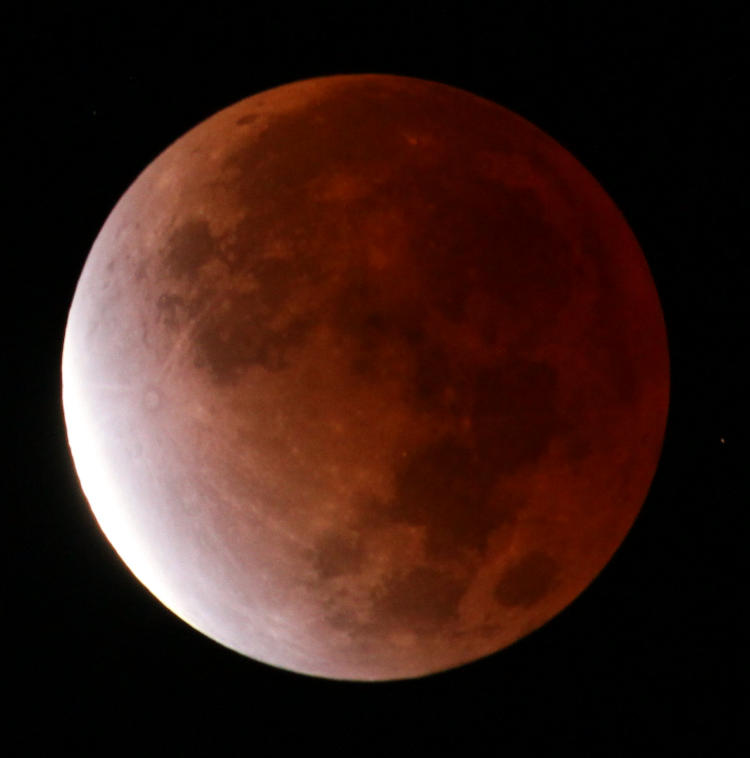If you’re in the eastern half of the US or Mexico, eastern third of Canada, or anywhere in Central and South America, there will be a total lunar eclipse on Sunday evening (May 15th) – see here for times for your area. The moon will be passing deep into the Earth’s shadow, so totality will last over 90 minutes – you can use Stellarium to plot the directions and altitudes to see if you can lay out a nice tableau.
Present weather reports call for partly cloudy conditions here that night, so we’ll just have to see how that develops. Maybe I’ll be back Tuesday with some eclipse pics, maybe not.
I’d recommend focusing manually on the full moon before the eclipse begins, checking the images at high magnification as needed, and when you nail focus, lock that focus position and leave it alone. Bear in mind that, at totality, the exposure time may stretch out pretty long, long enough for motion blur from the passing moon to soften the image, so boost ISO as it goes closer to totality to keep the shutter speed as short as possible. Set White Balance to ‘Daylight’ to keep the colors accurate.

Stellarium revealed another little tidbit: somewhere just before midnight EDT, the moon will eclipse a 6th magnitude star while totally eclipsed itself – this may be worth capturing on video (lock that tripod tight!) While everything in the sky moves east to west, the moon is slightly slower than the stars, so the eclipsed star (HIP 76033 A, if you need to know) will disappear against the lower left portion of the moon, seemingly backwards. This is also why the lunar eclipse itself seems to progress backwards from the apparent motion in the sky.
So, have at it, and good luck!




















































